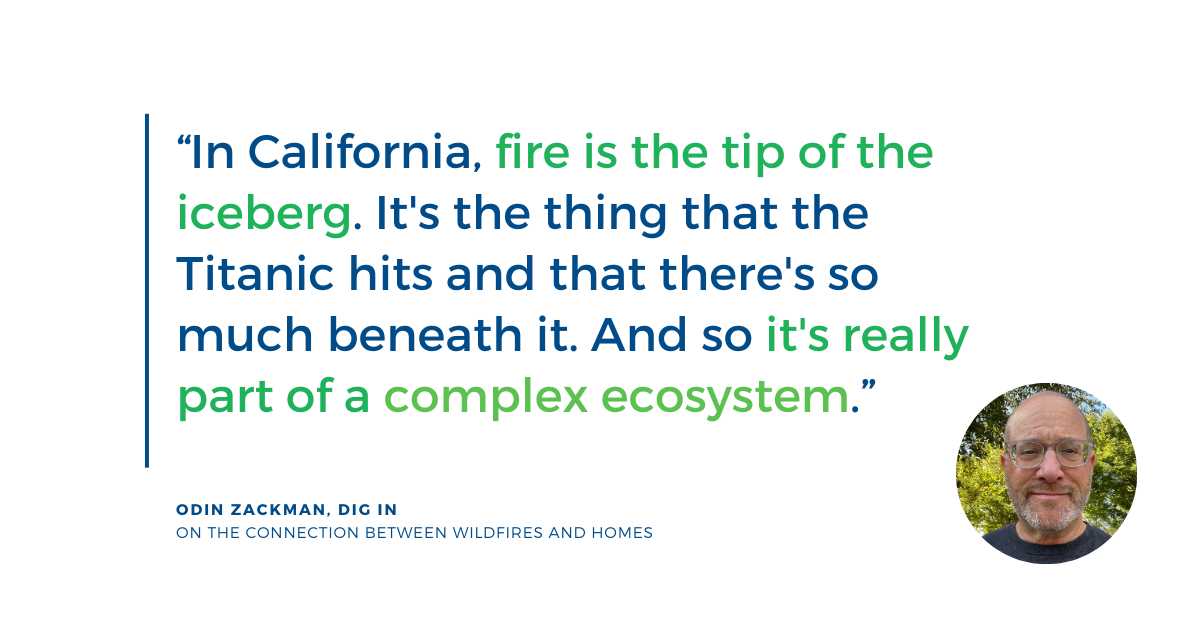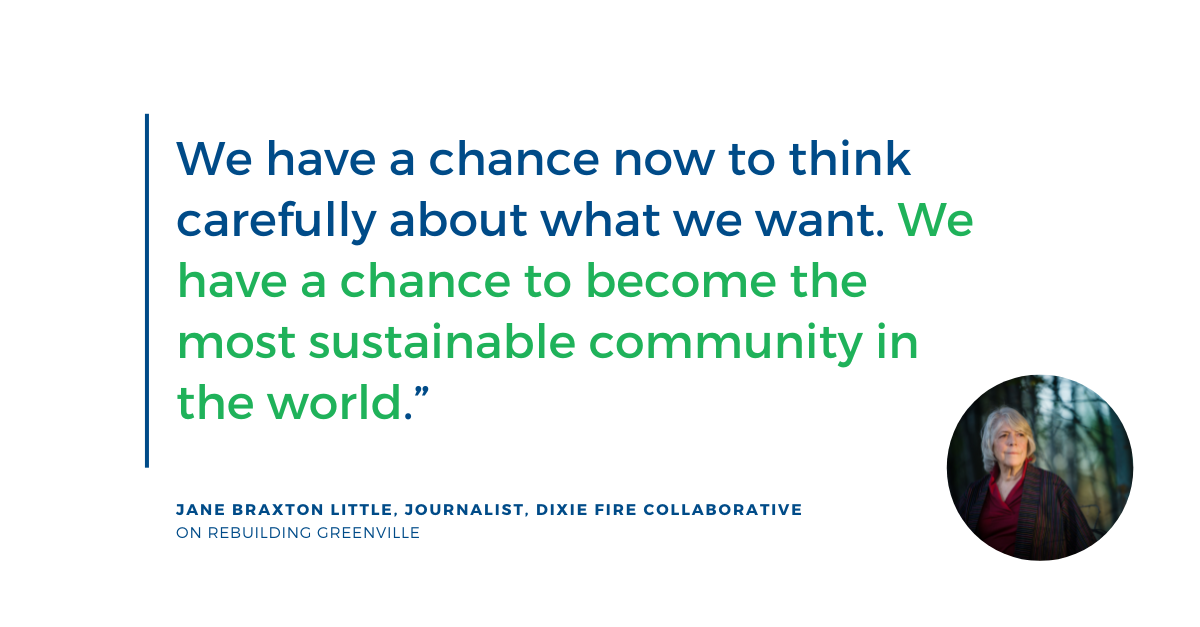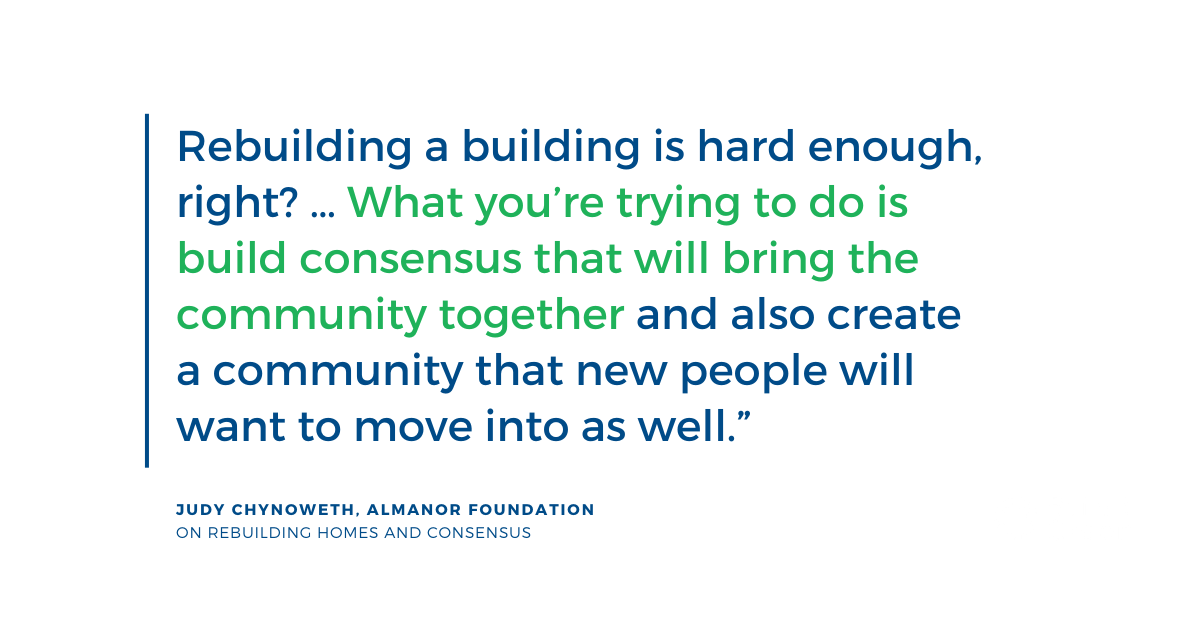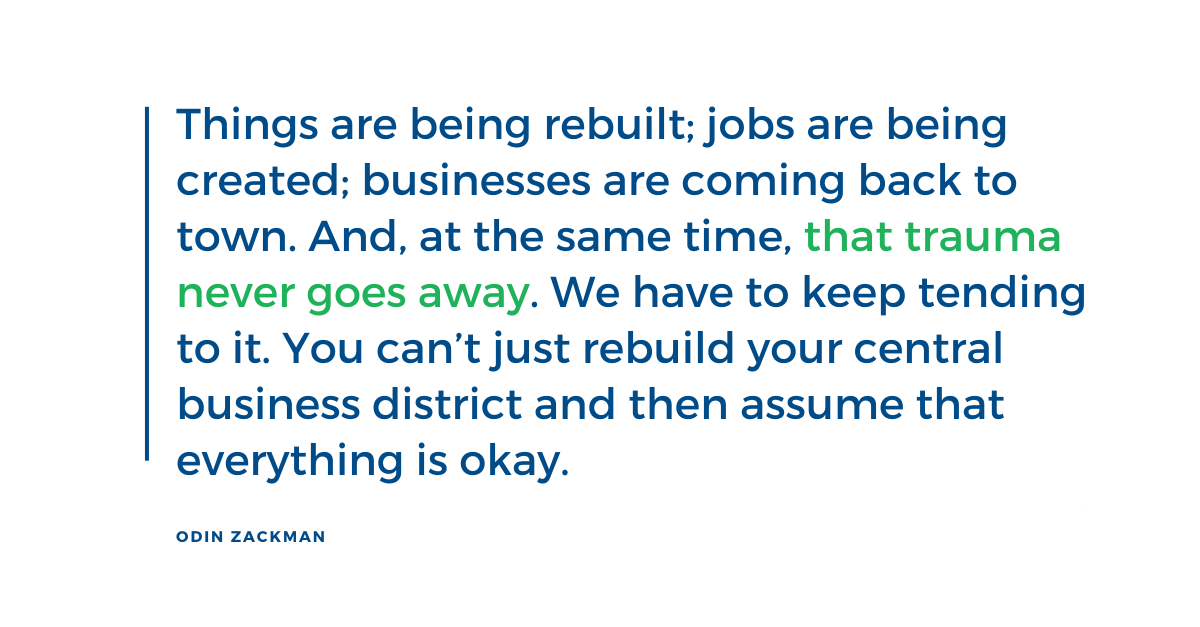Judy is a resident of Chester where she appreciates the closeness of rural communities and the fact that you’re always seeing each other at the one grocery store or the post office, since Chester doesn’t have mail delivery service. That closeness became more important than Plumas County residents could have realized after the Dixie Fire.
Judy was extremely fortunate that her home didn’t burn in the Dixie Fire. She shared the survivor’s guilt that she and many Chester residents feel even now when they leave Chester and enter the burn scar around Greenville. Many of her long-time friends lost their homes in Greenville and she’s seen firsthand their collective and on-going trauma. “The burn scar is all around us,” she says.
For months after the fire, every conversation was, “‘Where were you evacuated? How long did you stay? How often did you have to move, and what was it like? The whole experience was a common experience for the town.“ And even as this October marks the two year anniversary of the fire being contained, the trauma—and at times anger—is still present.
Odin often finds himself partnering with communities in the aftermath of processing and recovering from climate-related disasters. And he spends a lot of time thinking about how we rebuild, especially in communities that have experienced trauma. The two practices that guide his work are centering empathy and listening first to understand.
“We’re still in a system that makes us do and figure out a lot of things on our own,” Odin shares. This system often leaves people feeling after disasters that they are on their own. Odin’s work is about trying to reorient that approach on many different levels, to a more empathetic framework where we can really care for each other and meet people where they are—especially after a disaster.
It’s horrific to lose your home, property and livelihood. Each neighborhood and community is different—there are different forces at play, with unique needs and desires of the community. But at the heart of this is grief, trauma and tremendous loss. We can’t just be thinking “I’m going to build you a modular home and then you will be okay,” says Odin. There’s a dimensionality and complexity of support needed – from financial, material, psychological, spiritual, and much more.
Odin says that the grief and response that follows losing your home or community is often similar to the grief and response that comes when you lose a parent or partner. There’s often an initial rush from family and community, but there’s still a need for long-term support after that initial wave. Similarly, he hopes that we can find a sense of consistency, regular encouragement and support in community rebuilding efforts so that the rebuilding can happen and there is continued care along the way as people process and grieve.
There’s a lot of opportunity to think about how we rebuild. Odin says, “It starts with reconsidering design, building materials, and where we choose to build. Wildfire recovery especially means rebuilding in a way that doesn’t repeat the same mistakes that were made in the first place.”
Finally, Odin shared, “If we’re going to build healthier, more resilient communities, we need healthier, more resilient and regenerative approaches that see things as living, breathing, interconnected systems.” It requires us to reorient the way we think about how we build, what we build, how we’re interacting with each other, and how people are supported, he says. With this shift, true care and stewardship of ourselves, our communities and our landscapes and larger places is possible.
As climate change continues, wildfires will be part of our lives and reality in California. We can make changes to prevent fires, and we can learn from communities like Greenville about ways to rebuild our homes and communities differently— with more climate resilience, adaptability, safeguards and community supports in place. Build It Green is committed to continuing our rebuilding work in Greenville and to sharing out the lessons learned for communities across California. We hope the strength and determination from the people of Greenville inspires you to think about your home and community differently.



